Friday Pop Quiz 9/27/2024
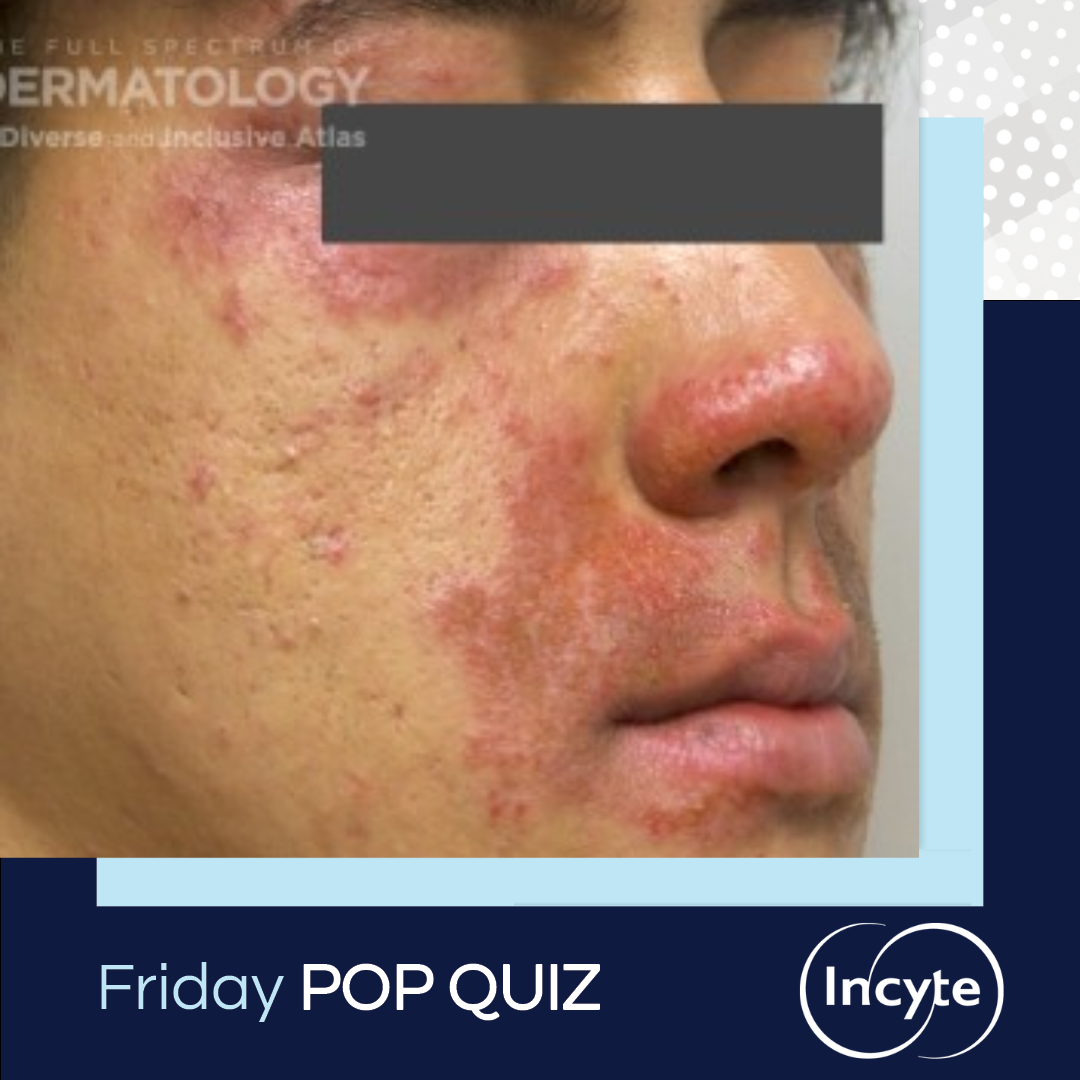 A 24-year-old female patient presents with groups of itchy and tender small red papules around the eyes, nostrils, and mouth. Which of the following treatments is the first-line treatment used to treat severe cases of this condition?
A. Oral doxycycline for 6-12 weeks
B. High dose isotretinoin
C. Topical erythromycin gel
D. Topical tacrolimus ointment
E. Topical metronidazole
T …
A 24-year-old female patient presents with groups of itchy and tender small red papules around the eyes, nostrils, and mouth. Which of the following treatments is the first-line treatment used to treat severe cases of this condition?
A. Oral doxycycline for 6-12 weeks
B. High dose isotretinoin
C. Topical erythromycin gel
D. Topical tacrolimus ointment
E. Topical metronidazole
T …
 A 24-year-old female patient presents with groups of itchy and tender small red papules around the eyes, nostrils, and mouth. Which of the following treatments is the first-line treatment used to treat severe cases of this condition?
A. Oral doxycycline for 6-12 weeks
B. High dose isotretinoin
C. Topical erythromycin gel
D. Topical tacrolimus ointment
E. Topical metronidazole
T …
A 24-year-old female patient presents with groups of itchy and tender small red papules around the eyes, nostrils, and mouth. Which of the following treatments is the first-line treatment used to treat severe cases of this condition?
A. Oral doxycycline for 6-12 weeks
B. High dose isotretinoin
C. Topical erythromycin gel
D. Topical tacrolimus ointment
E. Topical metronidazole
T … 

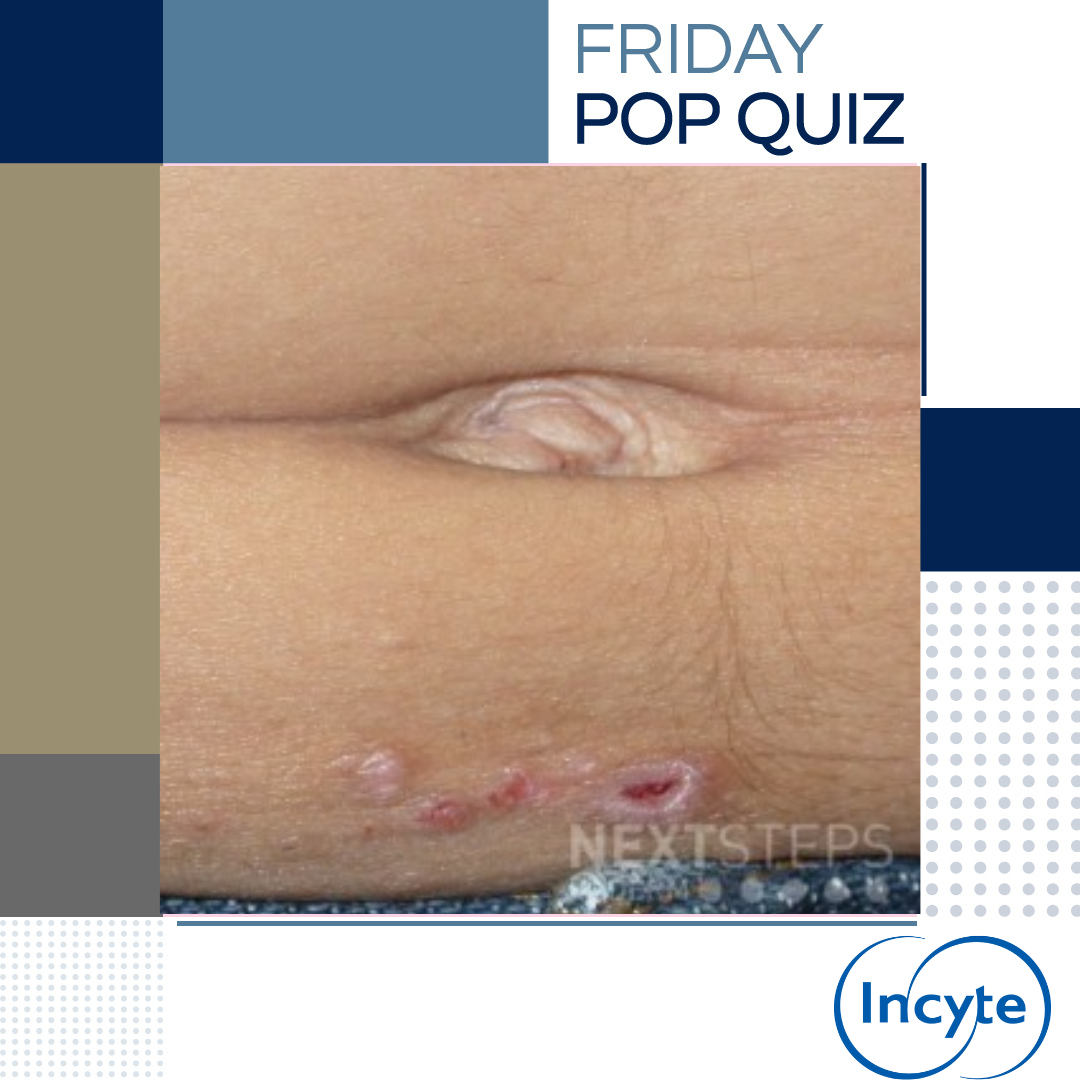 What is the most likely diagnosis?
A. Psoriasis
B. Pityriasis rosea
C. Cutaneous T-cell lymphoma
D. Contact dermatitis
E. Lichen planus
To find out the correct answer and read the explanation, click here.
Brought to you by our brand partner
…
What is the most likely diagnosis?
A. Psoriasis
B. Pityriasis rosea
C. Cutaneous T-cell lymphoma
D. Contact dermatitis
E. Lichen planus
To find out the correct answer and read the explanation, click here.
Brought to you by our brand partner
… 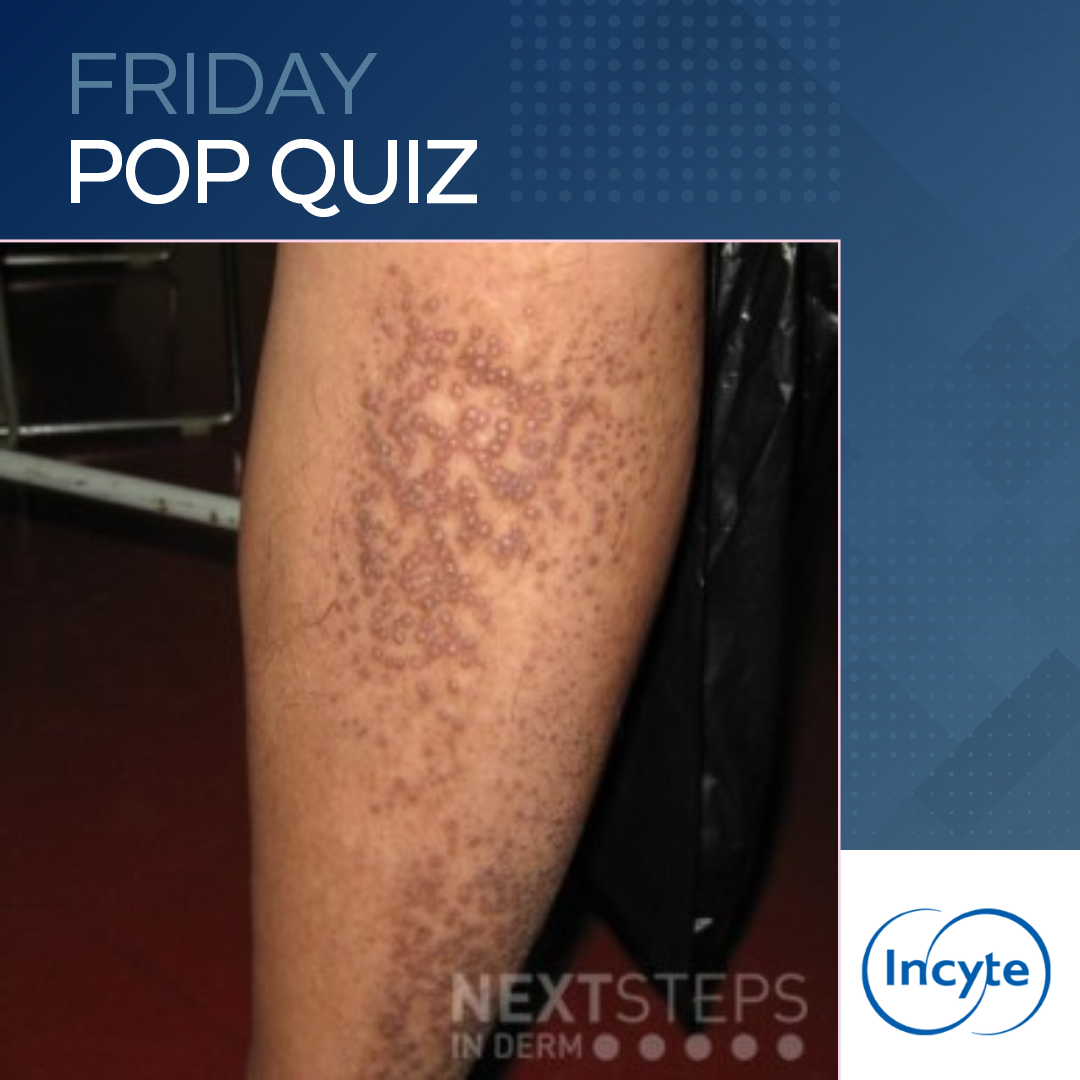 40-year-old man presents with a chronic pruritic eruption. Which of the following is true?
A. Apple-green birefringence on PAS stain
B. Improves after treating underlying infection
C. Stains PAS positive and diastase resistant
D. Demonstrates amyloid deposition predominantly around blood vessels
E. Associated with a lymphoproliferative disorder
To find out the correct answer an …
40-year-old man presents with a chronic pruritic eruption. Which of the following is true?
A. Apple-green birefringence on PAS stain
B. Improves after treating underlying infection
C. Stains PAS positive and diastase resistant
D. Demonstrates amyloid deposition predominantly around blood vessels
E. Associated with a lymphoproliferative disorder
To find out the correct answer an … 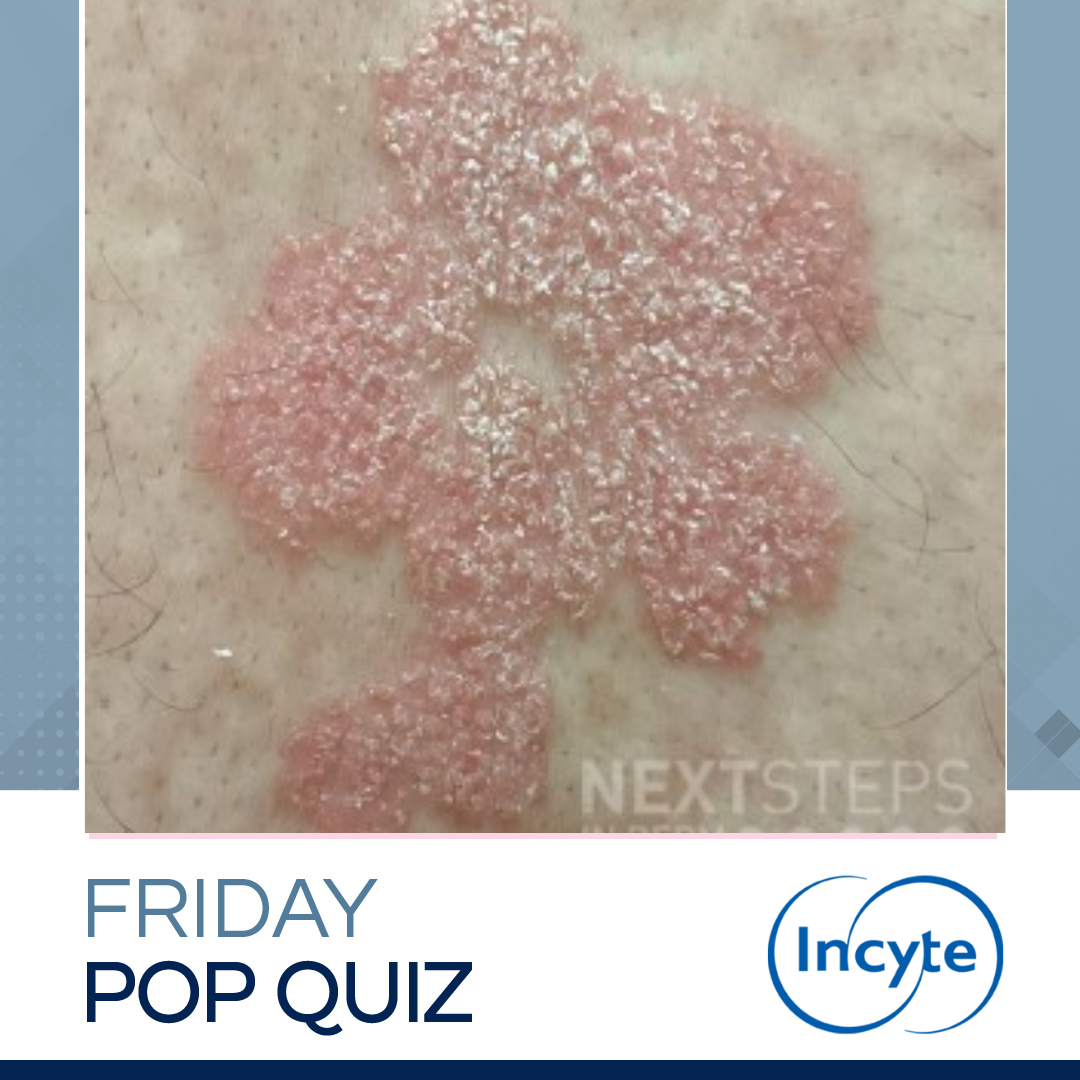 A 35-year-old woman presents to clinic with the skin lesions (shown) and joint pain. She was previously well controlled on guselkumab, but has flared since her dog was diagnosed with cancer. She has previously failed various treatments including topical steroids, methotrexate, narrow-band UVB, adalimumab, ixekizumab, and etanercept. She developed transaminitis and hepatic steatosis in response t …
A 35-year-old woman presents to clinic with the skin lesions (shown) and joint pain. She was previously well controlled on guselkumab, but has flared since her dog was diagnosed with cancer. She has previously failed various treatments including topical steroids, methotrexate, narrow-band UVB, adalimumab, ixekizumab, and etanercept. She developed transaminitis and hepatic steatosis in response t … 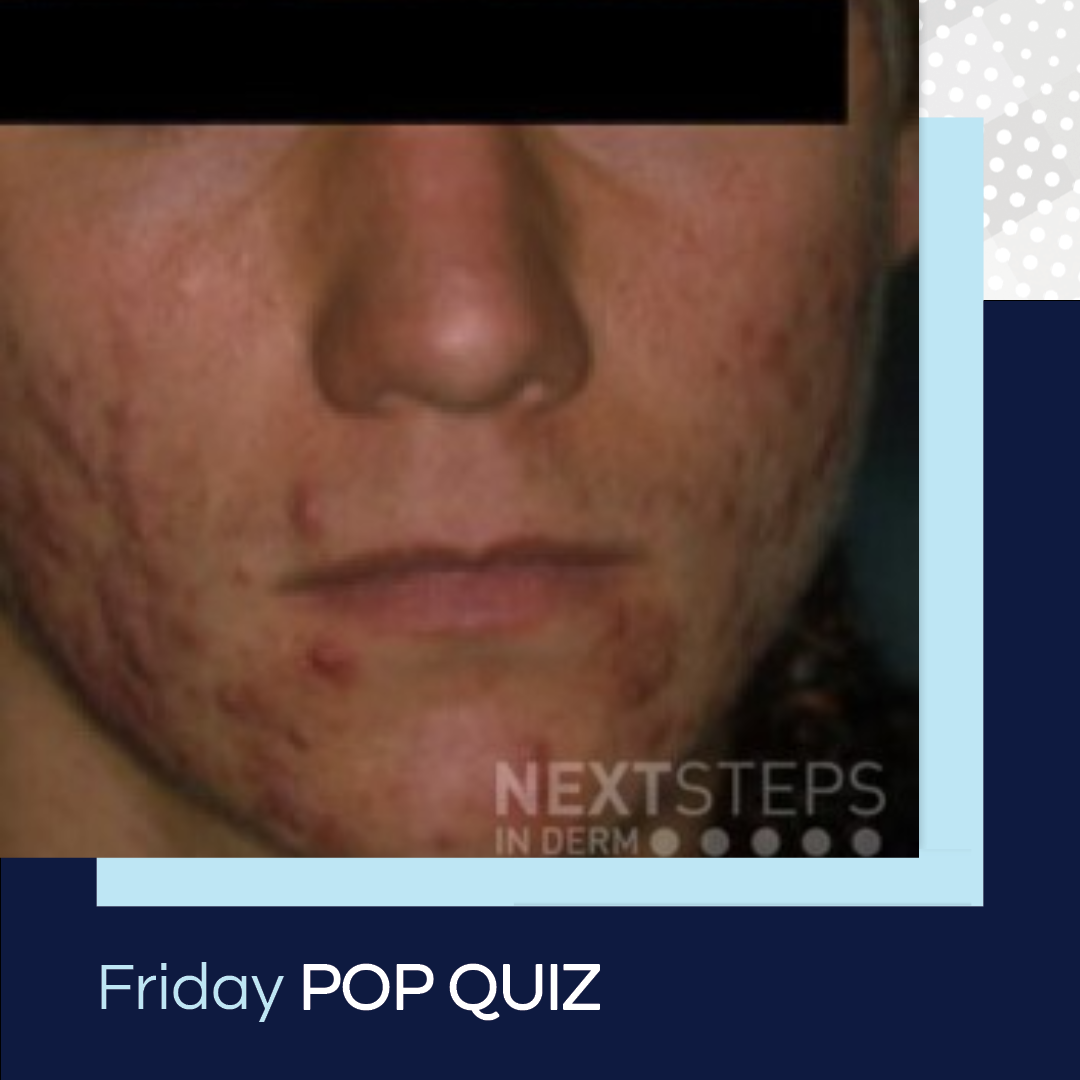 This patient was started on isotretinoin but failed to discontinue the tetracycline. He is at risk for what complication?
A. Acne fulminans
B. Pseudotumor cerebri
C. Diarrhea
D. Depression
E. Myositis
To find out the correct answer and read the explanation, click here. …
This patient was started on isotretinoin but failed to discontinue the tetracycline. He is at risk for what complication?
A. Acne fulminans
B. Pseudotumor cerebri
C. Diarrhea
D. Depression
E. Myositis
To find out the correct answer and read the explanation, click here. …